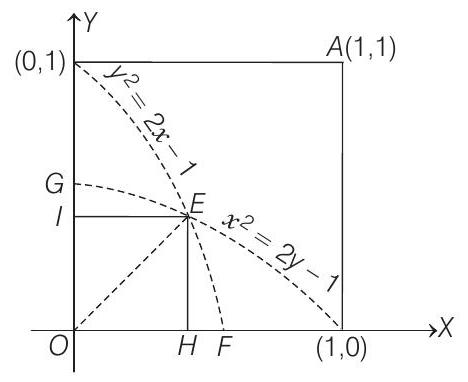Question 41
- Consider a square with vertices at and . If is the region consisting of all points inside the square which are nearer to the origin than to any edge. Then, sketch the region and find its area.
M)
Show Answer
Solution:
- The equations of the sides of the square are as follow :

Let the region be and is any point inside it.
Then, according to given conditions,
Now, in and , the first equation represents a parabola with vertex at and second equation represents a parabola with vertex and in and , the first equation represents a parabola with vertex at and second equation represents a parabola with vertex at . Therefore, the region is lying inside the four parabolas

where, is the shaded region.
Now, is symmetrical in all four quadrants, therefore Area lying in the first quadrant.
Now, and intersect on the line . The point of intersection is .
Area of the region
=Area of Area of
Similarly, area sq units
Therefore, area of lying in first quadrant
Hence, sq units








